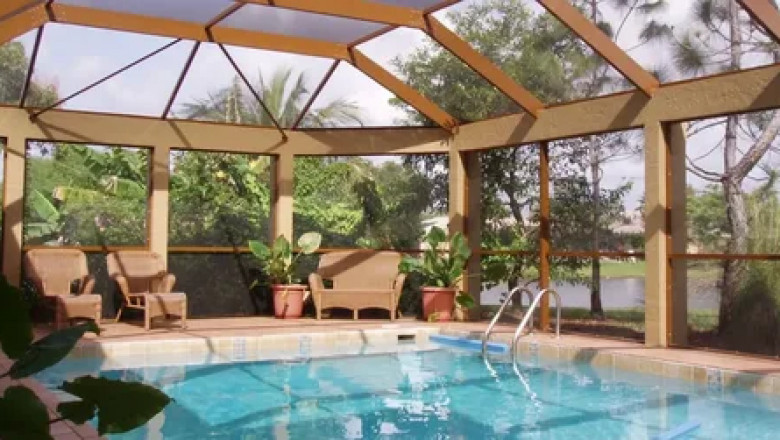views
A beautifully designed pool area with perfectly laid pavers can elevate your outdoor space—until those pavers start shifting, creating tripping hazards and an unsightly appearance. Understanding why pool pavers shift and how to prevent this issue can save you from expensive repairs down the line. In this guide, we’ll explore the common causes of shifting pavers, solutions to stabilize them, and when to call Inground Pool Repair Specialists for professional help. We’ll also cover related concerns like Pool Tile Crack Repair and the benefits of regular Paver Maintenance Services to keep your pool area safe and stunning.
Why Do Pool Pavers Shift?
Shifting pavers are more than just a cosmetic issue—they can lead to structural problems around your pool. Here are the primary causes:
1. Poor Base Preparation
-
Issue: A weak or uneven base (usually sand or gravel) can’t support the weight of pavers, causing them to sink or shift.
-
Solution: Ensure proper excavation, compaction, and a 4–6 inch base of crushed stone before installation.
2. Erosion from Water Drainage
-
Issue: Heavy rain or improper drainage washes away the sand or gravel beneath pavers, destabilizing them.
-
Solution: Install a proper slope (1/4 inch per foot) away from the pool and use edge restraints to lock pavers in place.
3. Freeze-Thaw Cycles
-
Issue: In cold climates, water under pavers freezes and expands, pushing them out of place.
-
Solution: Use polymeric sand (which resists washout) and ensure proper sealing before winter.
4. Heavy Traffic or Weight
-
Issue: Constant foot traffic, furniture, or vehicles can displace pavers over time.
-
Solution: Avoid placing heavy objects on pavers and consider reinforced designs for high-traffic areas.
5. Tree Roots or Soil Movement
-
Issue: Nearby tree roots or shifting soil can lift or misalign pavers.
-
Solution: Remove invasive roots during installation and opt for root barriers if needed.
How to Fix Shifting Pool Pavers
1. Releveling Loose Pavers
-
Remove shifted pavers and replenish the base material.
-
Compact the area and reset the pavers, ensuring they’re level.
2. Refilling Joints with Polymeric Sand
-
Sweep sand into the gaps between pavers.
-
Mist with water to activate the binding agent and prevent erosion.
3. Installing Edge Restraints
-
Plastic or metal restraints keep pavers from spreading outward.
-
Essential for curved or sloped pool decks.
4. Professional Help from Inground Pool Repair Specialists
-
For severe shifting or underlying structural issues, experts can assess and repair the base, drainage, or surrounding pool structure.
Preventing Future Paver Shifting
1. Invest in Professional Installation
-
Hiring Paver Maintenance Services ensures proper base preparation and long-term stability.
2. Regular Inspections & Maintenance
-
Check for loose pavers, standing water, or cracks every season.
-
Address minor issues before they worsen.
3. Proper Drainage Solutions
-
French drains or channel drains can redirect water away from pavers.
4. Seal Pavers Every 2–3 Years
-
Sealing prevents water penetration and reduces erosion risks.
Related Pool Area Repairs
1. Pool Tile Crack Repair
-
Cracked tiles around the pool edge can indicate shifting foundations.
-
Professionals can replace tiles and address underlying issues.
2. Fixing Settling Concrete Pool Decks
-
If your pool deck is sinking, Inground Pool Repair Specialists can lift and stabilize it with mudjacking or foam injection.
3. Paver Maintenance Services for Longevity
-
Routine cleaning, sealing, and joint refilling keep pavers intact for decades.
When to Call a Professional
While DIY fixes work for minor shifting, consult experts if you notice:
✅ Large sunken sections or heaving pavers.
✅ Water pooling near the pool foundation.
✅ Cracks in adjacent Pool Tile Crack Repair areas.
Final Thoughts
Shifting pool pavers are preventable with the right base, drainage, and maintenance. For persistent problems, rely on Inground Pool Repair Specialists or Paver Maintenance Services to protect your investment. By addressing issues early, you’ll avoid costly repairs and keep your pool area safe and beautiful for years.
FAQs
1. Can I fix shifted pavers myself?
Yes, for minor shifts—relevel and refill joints. For major issues, call Paver Maintenance Services.
2. How much does paver repair cost?
Minor repairs:
200–
200–500. Full releveling:
1,000–
1,000–3,000+ (depending on area size).
3. Will sealing pavers stop them from shifting?
Sealing helps but won’t fix poor base issues. Proper installation is key.


















![[1 (888) 326-1024] How to Get in Touch with Expedia 24/7 Support Team: Phone, Email, and Chat Options](https://timessquarereporter.com/public/upload/media/posts/2025-06/01/1-888-326-1024-how-to-get-in-touch-with-expedia-24-7-support-team-phone-email-and-chat-options_1748757002-s.jpg)



Comments
0 comment